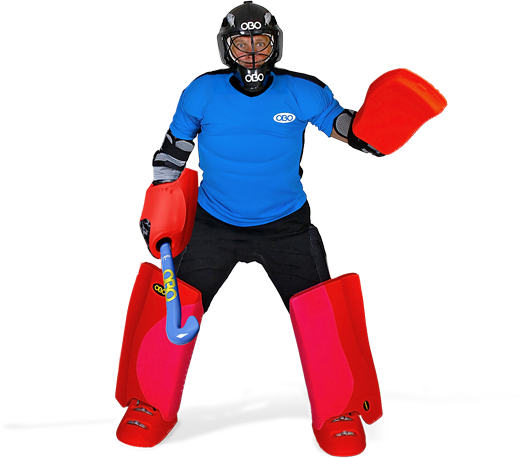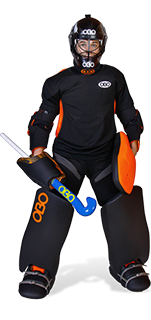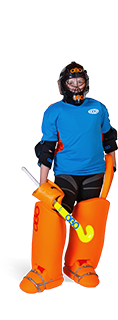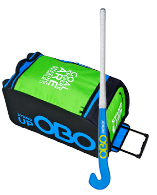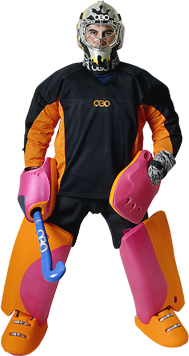KEEPERS RESOURCES

Deciding on your stance
The age old perspective is that positioning in a stance is up for to you to decide, according to your height, weight etc. or should follow a theoretic stance. Again, everybody is different, so not everyone’s going to be happy doing the same thing. Body posture affects both how you make the save and how you move around the D.
Of course different stances generally to apply for different situations; if you’re charging down a shot you’re not going to have your legs wide apart, and if you’re stopping a low shot to the side you don’t want your feet together, but the stance mentioned here is more movement based.
Which stance should I use?
Which stance you use depends on your personal abilities (in terms of reflexes, reaching out for shots from a glove stance, or strength, in being able to stand with a widened leg stance and being able to move further in a shorter time span, due to the strength of your leg muscles). There is no ‘set method’ for a ready stance, and each has its own advantages and disadvantages. It is up to deciding which is better for you and plays to your strengths, that will determine the ready stance you use.
Experiment to find what works for you, and then stick to it. As you start off in ‘between the sticks’ as a younger keeper, it’s best to iron out the basics, so you will find a lot of goalkeepers using a simple ‘y’ stance. As you get older, you will want to develop your style and skills to counter the development of the opposition players, which includes working on a better ready stance. However, change will not come naturally (along with the dangers of bad habits recurring) and you will have to work and train hard to adapt. You will find that positioning yourself wider apart with your hands held raised is uncomfortable and weird at first, so it will need work and practice to programme your brain for it, but the benefits will pay off if you want to use this stance.
A lot of pro keepers use a ‘flexible stance’; that is, they adapt it to the situation and its needs, despite having a predominant stance they use for most of the time. When action gets tighter in and the D gets filled up, they will lower their gloves ready to block off a lower shot (playing the percentages to cover shooting space and the most obvious shot able), whereas when in open and set plays, they will go back to readying for a potential raised shot, given the shooter’s time and space to release a high ball. Learning to read the play and make judgements like this will help you with your overall game and shot stopping abilities.
Ultimately, go with what works best for you: you are the central role in this situation and you have to be the one stopping all those shots! Don’t be put off by what other people are doing; what others say (unless your coach does have a point in fixing an issue!) or the goalkeepers you idolise do (unless they play a similar style and you think you can fit that into yours). Stick with what works for you – only you know what’s best can decide and can make the decision with that information.
Comments
Leave Your Comments Below















